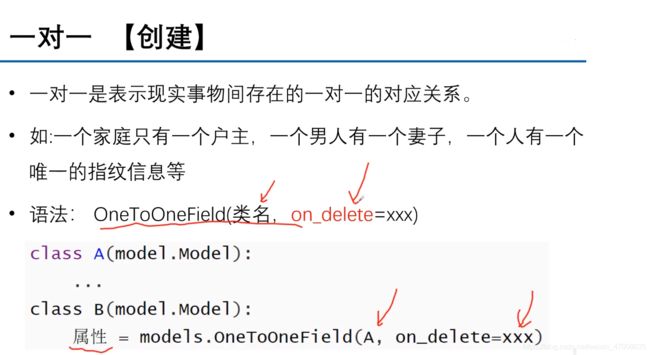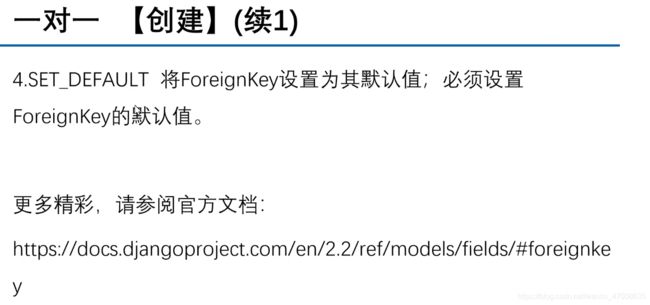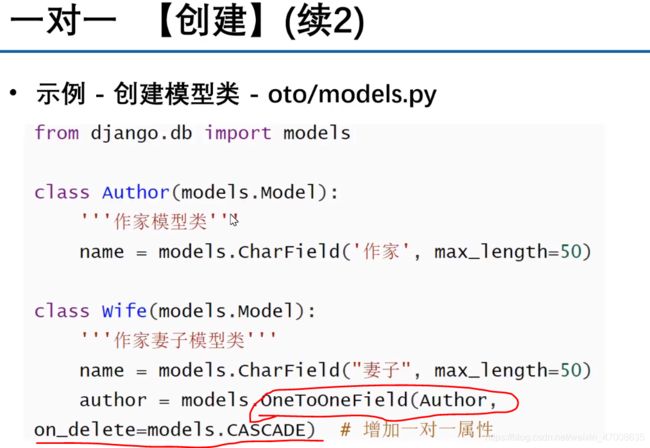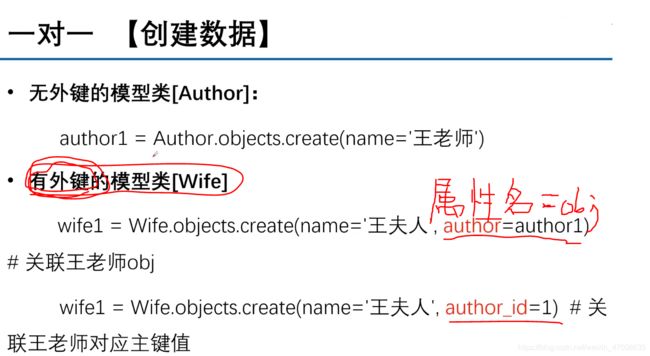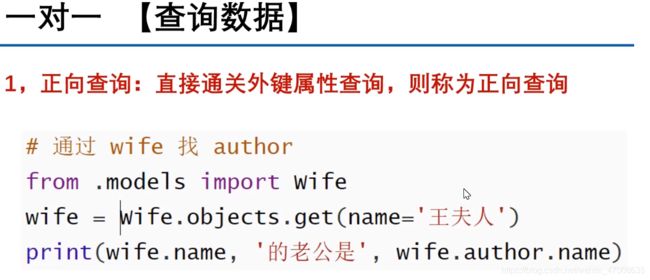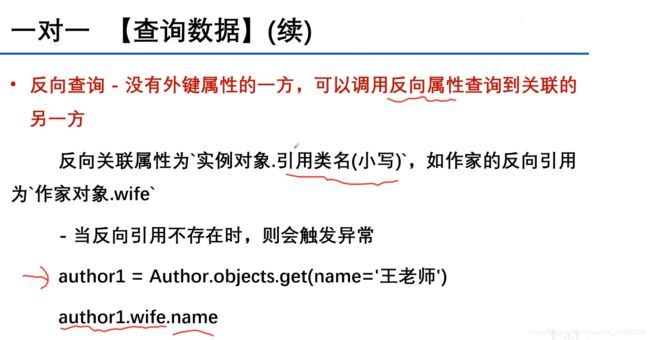- 探索数据之美:用Python生成词云图
进击的六角龙
Pythonpython开发语言数据可视化
导语在这个信息爆炸的时代,数据无处不在,而如何从海量数据中提取有价值的信息并可视化展示,成为了数据分析与可视化领域的重要课题。今天,我们将一起探索如何使用Python中的wordcloud库来生成词云图,让数据“说话”,用图形讲述数据背后的故事。wordcloud是一个在Python中广泛使用的第三方库,主要用于根据文本数据生成词云(WordClouds)。词云是一种可视化技术,它能够有效地展示文
- 使用Python实现LLM的文本生成:风格迁移与内容控制
二进制独立开发
GenAI与Python非纯粹GenAIpython开发语言人工智能自然语言处理分布式语言模型transformer
文章目录引言1.大型语言模型(LLM)概述1.1Transformer架构1.2预训练与微调2.文本生成基础2.1无条件生成2.2条件生成3.风格迁移3.1风格迁移的基本原理3.2使用Python实现风格迁移4.内容控制4.1内容控制的基本原理4.2使用Python实现内容控制5.高级技巧与优化5.1多轮对话生成5.2生成参数优化6.应用场景与未来展望结论引言随着自然语言处理(NLP)技术的快速发
- VM-UNet: 基于Vision Mamba UNet的医学图像分割项目推荐
翟洁英
VM-UNet:基于VisionMambaUNet的医学图像分割项目推荐VM-UNet项目地址:https://gitcode.com/gh_mirrors/vm/VM-UNet1.项目基础介绍和主要编程语言VM-UNet是一个基于VisionMambaUNet架构的开源项目,专门用于医学图像分割。该项目的主要编程语言是Python。VM-UNet结合了状态空间模型(StateSpaceModel
- 掌握Python核心技巧:轻松实现依赖注入与控制反转 | python 小知识
egzosn
python开发语言
掌握Python核心技巧:轻松实现依赖注入与控制反转|python小知识1.依赖注入与控制反转思想介绍**依赖注入(DependencyInjection,DI)**和控制反转(InversionofControl,IoC)是现代软件开发中的重要设计模式,它们的核心思想是减少模块间的耦合度,提高代码的可测试性和可维护性。依赖注入:指将对象的依赖关系从代码中抽离出来,由外部容器或框架在运行时动态地注
- python 获取字典值
adixuan8152
python
一、Python中的字典遍历方法:info={'name':'xiaoming','sex':'nan','age':20,'id':1}info2={'name':'hhh','sex':'nv','addr':'beijign'}第一种方法:#直接循环字典,循环的是字典的key,如果想循环的时候同时获取到key和value,那么就要用.items()方法fork,vininfo.items()
- python爬虫入门(实践)
雁于飞
爬虫python开发语言
python爬虫入门(实践)一、对目标网站进行分析二、博客爬取获取博客所有h2标题的路由确定目标,查看源码代码实现"""获取博客所有h2标题的路由"""url="http://www.crazyant.net"importrequestsfrombs4importBeautifulSoup#发送请求,获取页面所有内容r=requests.get(url)ifr.status_code!=200:r
- Python函数——函数的传入参数
0号——开拓者
python开发语言
一、引言在Python中,函数是组织代码的基本单位之一,它不仅可以帮助我们提高代码的复用性,还能使程序的结构更加清晰。在定义函数时,通常会需要传入一些数据,这些数据称为函数参数。参数是函数与外界交互的桥梁,它们使得同一个函数能够处理不同的输入,从而产生不同的输出。在本文中,我们将深入探讨Python函数的传入参数,包括如何定义、使用以及不同类型的参数如何影响函数的行为。二、传入参数的功能1、传入参
- 保留字-python
殇在山风
python程序员创富学习方法
保留字也称为关键字,是指被编程语言内部定义并保留使用的标识符python.x有35个保留字,如下and,as,await,break,class,continue,def,del,elif,else,except,False,finally,global,if,import,in,is,lambda,None,nonlocal,not,or,pass,raise,return,True,try,w
- 【经典算法】LeetCode 66. 加一(Java/C/Python3实现含注释说明,简单)
天天学长爱编程
LeetCode算法leetcode
题目描述给定一个由整数组成的非空数组所表示的非负整数,在该数的基础上加一。最高位数字存放在数组的首位,数组中每个元素只存储单个数字。你可以假设除了整数0之外,这个整数不会以零开头。示例1:输入:[1,2,3]输出:[1,2,4]解释:输入数组表示数字123。示例2:输入:[4,3,2,1]输出:[4,3,2,2]解释:输入数组表示数字4321。思路及实现方式一:反转数组后逐位相加思路首先,将数组反
- 【LGR-196-Div.4】洛谷入门赛 #26 题A - H 详细题解--优化思路简洁代码(C++,Python语言描述)
多思考少编码
洛谷入门赛题解算法c++python开发语言
前言:觉得这个比赛很有意思的,都是暴力题,涉及一些细节,难度比较适合刚学编程语言的,可以很好的锻炼基础还有手速,最后两题也是比较有意思,之后也准备更新atc的比赛题解和洛谷的一些高质量比赛题解(算法网瘾就是想参加各种比赛)如果觉得有帮助,或者觉得我写的好,可以点个赞或关注,也可以看看我的一些其他文章,我之后也会更新一些基础算法详细解释比赛链接:【LGR-196-Div.4】洛谷入门赛#26-洛谷|
- 程序代码篇---Python日志输出
Ronin-Lotus
程序代码篇python学习数据挖掘模块测试性能优化安全架构人机交互
文章目录前言Python日志输出python的logging日志库模块(一)日志级别:1.DEBUG2.INFO3.WARNING4.ERROR5.CRITICAL(二)logging模块中四个核心组成组件1.Logger2.Handler3.Formatter4.Level5.实例6.RotatingFileHandler日志处理器总结前言本文仅仅简单介绍了Python中日志输出管理。Pytho
- python,如何设置和读取文件的路径,详细版
资源存储库
算法笔记python开发语言
目录python,如何设置和读取文件的路径,详细版1.路径的基本概念2.设置路径手动指定路径使用os和pathlib模块1.使用os.path2.使用pathlib3.文件读取和写入文本文件的读取文本文件的写入逐行读取4.检查文件和目录是否存在5.获取和设置当前工作目录6.处理跨平台路径总结python,如何设置和读取文件的路径,详细版在Python中,设置和读取文件路径是一个常见任务。以下是详细
- Python 获取字典的值:全面指南
egzosn
pythonjava服务器前端linux
字典(dict)是Python中一个强大的数据结构,用于存储键值对。无论是处理JSON数据,还是设计复杂的配置文件,字典都无处不在。本文将全面介绍在Python中获取字典值的各种方法,通过多个详细的代码示例,帮助你掌握如何在不同场景下灵活操作字典。一、字典基础知识在Python中,字典使用花括号{}定义,其键必须是不可变的(如字符串、数字或元组),值可以是任意类型。以下是一个简单的字典示例:登录后
- 简单线性插值去马赛克算法的Python实现
大DA_辉
ISP图像处理_pythonpython计算机视觉人工智能
在图像处理领域中,去马赛克(Demosaicing)是一项关键技术,用于从单色彩滤波阵列(CFA)图像恢复全彩图像。本文将介绍一种简单的线性插值去马赛克算法,并将其从MATLAB代码转换为Python代码。最终结果将展示如何从Bayer格式的图像数据恢复出RGB全彩图像。什么是马赛克图像?马赛克图像是一种通过在传感器上覆盖彩色滤光片阵列(CFA)生成的单通道图像。最常见的CFA模式是Bayer模式
- SCALA学习手册.pdf(JasonSwartz)
zxfxghfd
scala学习pdf
书:python33com(<----web)Scala概述:“Scala是‘可扩展语言’(SCAlableLanguage)的缩写,于2003年创建,为JVM平台上的函数式编程以及面向对象编程提供一个高性能开发环境。”值与变量:“值(val)是不可变、有类型的存储单元;变量(var)是可变、有类型的存储单元。”数据类型与转换:“Scala支持多种数据类型,包括Byte、Short、Int、Lon
- numpy1.19.4与python3.9版本冲突解决
weixin_47154407
numpy1.19.4与python3.9版本冲突解决一、问题分析runtimeError:packagefailstopassasanitycheck解决方法如下:解决一:使用python3.9和numpy1.19.4时会发生此错误,卸载numpy1.19.4并安装1.19.3,即可解决此问题使用pipuninstallnumpy再安装numpy1.19.3版本即可,使用如下命令卸载命令:pip
- 成功解决:ssl报错:pip is configured with locations that require TLS/SSL, however the ssl module in Python i
兰若姐姐
安装教程报错解决工具使用专栏sslpippython
1、下载安装openssl#执行下载命令sudowgetwgethttps://www.openssl.org/source/openssl-3.0.7.tar.gz#解压tar-zxvfopenssl-3.0.7
- tf.function-> AttributeError: ‘double‘ object has no attribute ‘shape‘
乔宇同学
学习tensorflow
跑tensorflow时出现的bug,不使用tf.function没问题,一旦挂上装饰符,就报错,报错内容如下:Traceback(mostrecentcalllast):File"D:\Anaconda3\envs\tensorflow2\lib\site-packages\tensorflow_core\python\eager\function.py",line111,in_make_inp
- GAN在图像增强中的应用实战指南
码字仙子
本文还有配套的精品资源,点击获取简介:图像增强技术通过算法改善图像质量,GAN作为一种生成对抗网络,在此领域具有重要应用。通过生成器和判别器的对抗性训练,GAN可以生成逼真图像、修复低质量图像、扩增数据集并进行风格迁移。本项目将介绍如何使用Python及其相关库实现GAN图像增强,包括模型的构建、训练和评估。通过项目案例学习,你可以掌握GAN在图像增强中的实际应用,提高图像处理和深度学习的技能。1
- pythonnumpy库离线安装_linux Python2.7 离线安装pip、numpy、scipy、sklearn等
weixin_39974932
服务器是离线的,只能离线安装安装pip1.先安装setuptools下载地址:https://pypi.python.org/pypi/setuptools#downloads将下载后的文件解压,进入到解压后的文件所在的目录执行命令:pythonsetup.pyinstall2安装pip下载地址:https://pypi.python.org/pypi/pip#downloads将下载后的文件解压
- 【Python机器学习】无监督学习——K-均值聚类算法
zhangbin_237
Python机器学习机器学习算法pythonkmeansk-means均值算法
聚类是一种无监督的学习,它将相似的对象归到同一簇中,它有点像全自动分类。聚类方法几乎可以应用于所有的对象,簇内的对象越相似,聚类的效果越好。K-均值聚类算法就是一种典型的聚类算法,之所以称之为K-均值是因为它可以发现k个不同的簇,且每个簇的中心采用簇中所含值的均值计算而成。簇识别给出聚类结果的含义,假定有一些数据,现在将相似数据归到一起,簇识别会告诉我们这些簇到底都是些什么。聚类与分类的最大不同在
- python3.9安装numpy+mky_windows下python 3.9 Numpy scipy和matlabplot的安装教程详解
Madmoiselle.may
学习python过程中想使用python的matlabplot绘图功能,遇到了一大批问题,然后一路过关斩将,最终安装成功,实为不易,发帖留念。1首先打开cmdwin+r2pip安装pip3install--usernumpyscipymatplotlib–user选项可以设置只安装在当前的用户下,而不是写入到系统目录。默认情况使用国外线路,国外太慢,我们使用清华的镜像就可以:pip3install
- 黑客常备十大编程语言,每一个都不容易学,但每一个又很有用
一秋的编程笔记
Python编程计算机科技数据库sql爬虫python自动化编程语言
文章目录1、C语言2、Python3、SQL4、Javascript5、PHP6、C++编程7、JAVA8、Ruby9、Perl10、BashPython学习资源分享1、Python所有方向的学习路线2、学习软件3、精品书籍4、入门学习视频5、实战案例6、清华编程大佬出品《漫画看学Python》7、Python副业兼职与全职路线一定要注意,您选择的编程将在很大程度上取决于您要定位的系统类型和计划使
- 关于python装numpy这些
danpengxie
pythonnumpy
弄了2个版本的,2.7和最新的3.6版本。步骤是一样的,每次要的二进制文件http://www.lfd.uci.edu/~gohlke/pythonlibs/#scipy找准了二进制文件,其下载在python的script文件夹下.然后命令截个图怕忘了(乖乖下载二进制文件,不要pipinstall.反正一会pip直接install,一会用二进制装会错的)现在装了2版本用py-2和py-3去调用
- Python连接券商API有哪些步骤?需要掌握哪些关键技术与知识?
股票程序化交易接口
量化交易股票API接口Python股票量化交易python券商api连接步骤关键技术股票量化接口股票API接口
Python股票接口实现查询账户,提交订单,自动交易(1)Python股票程序交易接口查账,提交订单,自动交易(2)股票量化,Python炒股,CSDN交流社区>>>API的概念与功能API即应用程序接口,券商API是券商提供给外部开发者的接口。它就像是一座桥梁,使得外部程序能够与券商的交易系统进行交互。通过这个接口,可以获取市场数据,如股票价格、成交量等信息,还能够进行交易操作,像下单买卖股票等
- 【Python】已解决:WARNING: pip is configured with locations that require TLS/SSL, however the ssl module i
屿小夏
pythonpipssl
个人简介:某不知名博主,致力于全栈领域的优质博客分享|用最优质的内容带来最舒适的阅读体验!文末获取免费IT学习资料!文末获取更多信息精彩专栏推荐订阅收藏专栏系列直达链接相关介绍书籍分享点我跳转书籍作为获取知识的重要途径,对于IT从业者来说更是不可或缺的资源。不定期更新IT图书,并在评论区抽取随机粉丝,书籍免费包邮到家AI前沿点我跳转探讨人工智能技术领域的最新发展和创新,涵盖机器学习、深度学习、自然
- python 安装scipy
Half0pen
linuxmachinelearning
之前安装pybrain,fann2要用到scipy,numpy但是用pip并没有安装成功sudoapt-getinstallpython-numpypython-scipypython-matplotlib安装成功==
- 【Python学习】科学计算工具包SciPy-安装配置
墨夶
Python学习资料python学习scipy
SciPy安装与配置指南SciPy是一个基于Python的科学计算库,广泛应用于数学、科学和工程领域。它建立在NumPy库的基础上,提供了丰富的数学和科学计算工具。本文将详细介绍如何在不同环境下安装和配置SciPy。1.前提条件在安装SciPy之前,确保你的系统已经安装了Python和pip。你可以通过以下命令检查Python是否已经安装:python--version如果输出类似于Python3
- Python 3.9 兼容的 NumPy 版本
Distantfbc
pythonnumpy
了解与Python3.9兼容的NumPy版本。根据搜索结果,以下是一些与Python3.9兼容的NumPy版本:NumPy1.21.1:这是一个与Python3.9兼容的NumPy版本。您可以通过运行以下命令来安装这个版本的NumPy:pipinstallnumpy==1.21.1NumPy1.26.0:根据版本对应关系表,NumPy1.26.0兼容Python3.9到Python3.12。您可以
- 【python】成功解决AttributeError: ‘Tuple’ object has no attribute ‘shape’
云天徽上
python运行报错解决记录python开发语言pandas机器学习numpysklearn
成功解决AttributeError:‘Tuple’对象没有属性‘shape’在Python的编程中,尤其是当我们使用如NumPy或Pandas等科学计算和数据处理库时,经常会遇到各种属性错误(AttributeError)。其中,“AttributeError:‘Tuple’对象没有属性‘shape’”是一个常见的错误,它通常意味着我们试图在一个元组(Tuple)对象上调用一个它并不拥有的方法或
- 怎么样才能成为专业的程序员?
cocos2d-x小菜
编程PHP
如何要想成为一名专业的程序员?仅仅会写代码是不够的。从团队合作去解决问题到版本控制,你还得具备其他关键技能的工具包。当我们询问相关的专业开发人员,那些必备的关键技能都是什么的时候,下面是我们了解到的情况。
关于如何学习代码,各种声音很多,然后很多人就被误导为成为专业开发人员懂得一门编程语言就够了?!呵呵,就像其他工作一样,光会一个技能那是远远不够的。如果你想要成为
- java web开发 高并发处理
BreakingBad
javaWeb并发开发处理高
java处理高并发高负载类网站中数据库的设计方法(java教程,java处理大量数据,java高负载数据) 一:高并发高负载类网站关注点之数据库 没错,首先是数据库,这是大多数应用所面临的首个SPOF。尤其是Web2.0的应用,数据库的响应是首先要解决的。 一般来说MySQL是最常用的,可能最初是一个mysql主机,当数据增加到100万以上,那么,MySQL的效能急剧下降。常用的优化措施是M-S(
- mysql批量更新
ekian
mysql
mysql更新优化:
一版的更新的话都是采用update set的方式,但是如果需要批量更新的话,只能for循环的执行更新。或者采用executeBatch的方式,执行更新。无论哪种方式,性能都不见得多好。
三千多条的更新,需要3分多钟。
查询了批量更新的优化,有说replace into的方式,即:
replace into tableName(id,status) values
- 微软BI(3)
18289753290
微软BI SSIS
1)
Q:该列违反了完整性约束错误;已获得 OLE DB 记录。源:“Microsoft SQL Server Native Client 11.0” Hresult: 0x80004005 说明:“不能将值 NULL 插入列 'FZCHID',表 'JRB_EnterpriseCredit.dbo.QYFZCH';列不允许有 Null 值。INSERT 失败。”。
A:一般这类问题的存在是
- Java中的List
g21121
java
List是一个有序的 collection(也称为序列)。此接口的用户可以对列表中每个元素的插入位置进行精确地控制。用户可以根据元素的整数索引(在列表中的位置)访问元素,并搜索列表中的元素。
与 set 不同,列表通常允许重复
- 读书笔记
永夜-极光
读书笔记
1. K是一家加工厂,需要采购原材料,有A,B,C,D 4家供应商,其中A给出的价格最低,性价比最高,那么假如你是这家企业的采购经理,你会如何决策?
传统决策: A:100%订单 B,C,D:0%
&nbs
- centos 安装 Codeblocks
随便小屋
codeblocks
1.安装gcc,需要c和c++两部分,默认安装下,CentOS不安装编译器的,在终端输入以下命令即可yum install gccyum install gcc-c++
2.安装gtk2-devel,因为默认已经安装了正式产品需要的支持库,但是没有安装开发所需要的文档.yum install gtk2*
3. 安装wxGTK
yum search w
- 23种设计模式的形象比喻
aijuans
设计模式
1、ABSTRACT FACTORY—追MM少不了请吃饭了,麦当劳的鸡翅和肯德基的鸡翅都是MM爱吃的东西,虽然口味有所不同,但不管你带MM去麦当劳或肯德基,只管向服务员说“来四个鸡翅”就行了。麦当劳和肯德基就是生产鸡翅的Factory 工厂模式:客户类和工厂类分开。消费者任何时候需要某种产品,只需向工厂请求即可。消费者无须修改就可以接纳新产品。缺点是当产品修改时,工厂类也要做相应的修改。如:
- 开发管理 CheckLists
aoyouzi
开发管理 CheckLists
开发管理 CheckLists(23) -使项目组度过完整的生命周期
开发管理 CheckLists(22) -组织项目资源
开发管理 CheckLists(21) -控制项目的范围开发管理 CheckLists(20) -项目利益相关者责任开发管理 CheckLists(19) -选择合适的团队成员开发管理 CheckLists(18) -敏捷开发 Scrum Master 工作开发管理 C
- js实现切换
百合不是茶
JavaScript栏目切换
js主要功能之一就是实现页面的特效,窗体的切换可以减少页面的大小,被门户网站大量应用思路:
1,先将要显示的设置为display:bisible 否则设为none
2,设置栏目的id ,js获取栏目的id,如果id为Null就设置为显示
3,判断js获取的id名字;再设置是否显示
代码实现:
html代码:
<di
- 周鸿祎在360新员工入职培训上的讲话
bijian1013
感悟项目管理人生职场
这篇文章也是最近偶尔看到的,考虑到原博客发布者可能将其删除等原因,也更方便个人查找,特将原文拷贝再发布的。“学东西是为自己的,不要整天以混的姿态来跟公司博弈,就算是混,我觉得你要是能在混的时间里,收获一些别的有利于人生发展的东西,也是不错的,看你怎么把握了”,看了之后,对这句话记忆犹新。 &
- 前端Web开发的页面效果
Bill_chen
htmlWebMicrosoft
1.IE6下png图片的透明显示:
<img src="图片地址" border="0" style="Filter.Alpha(Opacity)=数值(100),style=数值(3)"/>
或在<head></head>间加一段JS代码让透明png图片正常显示。
2.<li>标
- 【JVM五】老年代垃圾回收:并发标记清理GC(CMS GC)
bit1129
垃圾回收
CMS概述
并发标记清理垃圾回收(Concurrent Mark and Sweep GC)算法的主要目标是在GC过程中,减少暂停用户线程的次数以及在不得不暂停用户线程的请夸功能,尽可能短的暂停用户线程的时间。这对于交互式应用,比如web应用来说,是非常重要的。
CMS垃圾回收针对新生代和老年代采用不同的策略。相比同吞吐量垃圾回收,它要复杂的多。吞吐量垃圾回收在执
- Struts2技术总结
白糖_
struts2
必备jar文件
早在struts2.0.*的时候,struts2的必备jar包需要如下几个:
commons-logging-*.jar Apache旗下commons项目的log日志包
freemarker-*.jar
- Jquery easyui layout应用注意事项
bozch
jquery浏览器easyuilayout
在jquery easyui中提供了easyui-layout布局,他的布局比较局限,类似java中GUI的border布局。下面对其使用注意事项作简要介绍:
如果在现有的工程中前台界面均应用了jquery easyui,那么在布局的时候最好应用jquery eaysui的layout布局,否则在表单页面(编辑、查看、添加等等)在不同的浏览器会出
- java-拷贝特殊链表:有一个特殊的链表,其中每个节点不但有指向下一个节点的指针pNext,还有一个指向链表中任意节点的指针pRand,如何拷贝这个特殊链表?
bylijinnan
java
public class CopySpecialLinkedList {
/**
* 题目:有一个特殊的链表,其中每个节点不但有指向下一个节点的指针pNext,还有一个指向链表中任意节点的指针pRand,如何拷贝这个特殊链表?
拷贝pNext指针非常容易,所以题目的难点是如何拷贝pRand指针。
假设原来链表为A1 -> A2 ->... -> An,新拷贝
- color
Chen.H
JavaScripthtmlcss
<!DOCTYPE HTML PUBLIC "-//W3C//DTD HTML 4.01 Transitional//EN" "http://www.w3.org/TR/html4/loose.dtd"> <HTML> <HEAD>&nbs
- [信息与战争]移动通讯与网络
comsci
网络
两个坚持:手机的电池必须可以取下来
光纤不能够入户,只能够到楼宇
建议大家找这本书看看:<&
- oracle flashback query(闪回查询)
daizj
oracleflashback queryflashback table
在Oracle 10g中,Flash back家族分为以下成员:
Flashback Database
Flashback Drop
Flashback Table
Flashback Query(分Flashback Query,Flashback Version Query,Flashback Transaction Query)
下面介绍一下Flashback Drop 和Flas
- zeus持久层DAO单元测试
deng520159
单元测试
zeus代码测试正紧张进行中,但由于工作比较忙,但速度比较慢.现在已经完成读写分离单元测试了,现在把几种情况单元测试的例子发出来,希望有人能进出意见,让它走下去.
本文是zeus的dao单元测试:
1.单元测试直接上代码
package com.dengliang.zeus.webdemo.test;
import org.junit.Test;
import o
- C语言学习三printf函数和scanf函数学习
dcj3sjt126com
cprintfscanflanguage
printf函数
/*
2013年3月10日20:42:32
地点:北京潘家园
功能:
目的:
测试%x %X %#x %#X的用法
*/
# include <stdio.h>
int main(void)
{
printf("哈哈!\n"); // \n表示换行
int i = 10;
printf
- 那你为什么小时候不好好读书?
dcj3sjt126com
life
dady, 我今天捡到了十块钱, 不过我还给那个人了
good girl! 那个人有没有和你讲thank you啊
没有啦....他拉我的耳朵我才把钱还给他的, 他哪里会和我讲thank you
爸爸, 如果地上有一张5块一张10块你拿哪一张呢....
当然是拿十块的咯...
爸爸你很笨的, 你不会两张都拿
爸爸为什么上个月那个人来跟你讨钱, 你告诉他没
- iptables开放端口
Fanyucai
linuxiptables端口
1,找到配置文件
vi /etc/sysconfig/iptables
2,添加端口开放,增加一行,开放18081端口
-A INPUT -m state --state NEW -m tcp -p tcp --dport 18081 -j ACCEPT
3,保存
ESC
:wq!
4,重启服务
service iptables
- Ehcache(05)——缓存的查询
234390216
排序ehcache统计query
缓存的查询
目录
1. 使Cache可查询
1.1 基于Xml配置
1.2 基于代码的配置
2 指定可搜索的属性
2.1 可查询属性类型
2.2 &
- 通过hashset找到数组中重复的元素
jackyrong
hashset
如何在hashset中快速找到重复的元素呢?方法很多,下面是其中一个办法:
int[] array = {1,1,2,3,4,5,6,7,8,8};
Set<Integer> set = new HashSet<Integer>();
for(int i = 0
- 使用ajax和window.history.pushState无刷新改变页面内容和地址栏URL
lanrikey
history
后退时关闭当前页面
<script type="text/javascript">
jQuery(document).ready(function ($) {
if (window.history && window.history.pushState) {
- 应用程序的通信成本
netkiller.github.com
虚拟机应用服务器陈景峰netkillerneo
应用程序的通信成本
什么是通信
一个程序中两个以上功能相互传递信号或数据叫做通信。
什么是成本
这是是指时间成本与空间成本。 时间就是传递数据所花费的时间。空间是指传递过程耗费容量大小。
都有哪些通信方式
全局变量
线程间通信
共享内存
共享文件
管道
Socket
硬件(串口,USB) 等等
全局变量
全局变量是成本最低通信方法,通过设置
- 一维数组与二维数组的声明与定义
恋洁e生
二维数组一维数组定义声明初始化
/** * */ package test20111005; /** * @author FlyingFire * @date:2011-11-18 上午04:33:36 * @author :代码整理 * @introduce :一维数组与二维数组的初始化 *summary: */ public c
- Spring Mybatis独立事务配置
toknowme
mybatis
在项目中有很多地方会使用到独立事务,下面以获取主键为例
(1)修改配置文件spring-mybatis.xml <!-- 开启事务支持 --> <tx:annotation-driven transaction-manager="transactionManager" /> &n
- 更新Anadroid SDK Tooks之后,Eclipse提示No update were found
xp9802
eclipse
使用Android SDK Manager 更新了Anadroid SDK Tooks 之后,
打开eclipse提示 This Android SDK requires Android Developer Toolkit version 23.0.0 or above, 点击Check for Updates
检测一会后提示 No update were found



